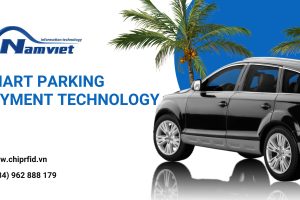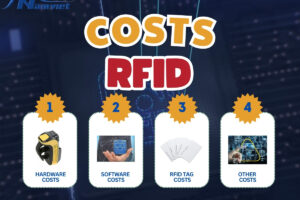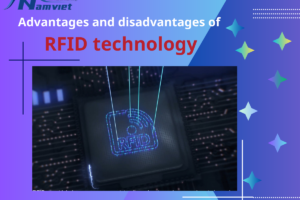According to the regulations of the Ministry of Transport, all expressways in Vietnam are required to implement electronic toll collection (ETC) from August 1, 2022. Vietnam Digital Traffic Joint Stock Company (VDTC) believes that automatic toll collection using RFID technology is suitable for the culture and traffic environment in Vietnam, with 3 advantages: high accuracy of identification, low cost of use, and ease of deployment and installation.

What is Electronic Toll Collection (ETC)?
Electronic Toll Collection (ETC) is a type of automatic toll collection system that uses technology to identify vehicles as they pass through toll stations. The toll fee is automatically deducted from a prepaid account linked to the vehicle. This means that drivers no longer need to stop and pay cash at toll booths. Instead, they can maintain a steady speed while the system identifies their vehicle and deducts the appropriate toll.
Comparison of ETC and MTC Toll Collection Systems
Manual Toll Collection (MTC) is the traditional method of toll collection in Vietnam. With this system, drivers must stop at toll booths to purchase tickets, make payments, and receive receipts. However, this method has presented challenges in management, auditing, and leads to significant time loss. Therefore, the relevant authorities have replaced this method with the Electronic Toll Collection (ETC) system.
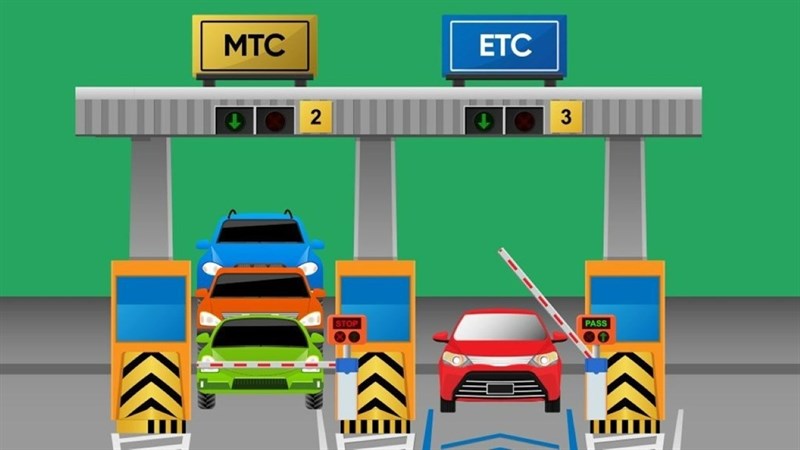
In Vietnam, the toll collection system has been transitioning from MTC (Manual Toll Collection) to ETC (Electronic Toll Collection), improving efficiency and bringing significant benefits. To clearly see the advantages and disadvantages of each method, please refer to the comparison table below:
| Feature | ETC (Electronic Toll Collection) | MTC (Manual Toll Collection) |
|---|---|---|
| Operating Principle | Uses modern electromagnetic field technology to automatically identify and track RFID tags attached to vehicles. | Based on barcode stamps combined with automatic license plate recognition technology. |
| Technology | RFID technology identifies objects via radio frequency. | OCR technology automatically recognizes license plates. |
| Toll Paying Entities | Registered and inspected motor vehicles allowed to circulate on roads, including cars, trucks, and similar vehicles. | |
| Exempt Entities | Fire trucks, ambulances, dyke protection vehicles, vehicles performing emergency tasks in case of dangerous epidemics, major disasters, agricultural and forestry vehicles, two-wheeled and three-wheeled motorcycles, specialized vehicles serving national defense and security (e.g., special-purpose vehicles, tanks), vehicles specifically used for funeral services. | |
| Toll Collection Method | Non-stop electronic toll collection. | Direct toll collection at the BOT station. |
| Payment Method | Automatic payment or online top-up. | Direct payment in cash. |
| Operating Hours | 24/7, including holidays (except for temporary suspension of toll collection with authorized notification). | |
| Vehicle Requirements at Toll Station | Maintain regulated speed and no need to stop to pay the toll. | Stop at the BOT station, pay the toll to the ticket inspector, and obtain a receipt. |
Therefore, the ETC non-stop toll collection system in Vietnam helps reduce waiting times, avoid traffic congestion, and provide optimal convenience for vehicle owners. This method also supports the rapid and accurate development of national traffic data. Additionally, ETC toll collection ensures optimal transparency, avoids potential revenue loss, and minimizes personnel costs as well as paper ticket expenses.
RFID Technology – The Key to Rapid Network Expansion
Currently, four common technologies are used for Electronic Toll Collection (ETC) worldwide:
- RFID Technology: RFID stands for Radio Frequency Identification. It uses electromagnetic fields to automatically identify and track tags attached to objects. An RFID system consists of RFID tags, RFID readers, antennas, and computer software.
- DSRC Technology: Dedicated Short-Range Communications technology.
- ANPR Technology: Automatic Number Plate Recognition technology.
- GNSS Technology: Global Navigation Satellite System technology.
Among these, the two most widely used technologies are DSRC (used in European Union countries and Singapore) and RFID (used in most other countries, including Vietnam).
From 0:00 on August 1, 2022, all expressways in Vietnam transitioned to using electronic toll collection (ETC) services. According to representatives from VDTC (Vietnam Digital Traffic Joint Stock Company), RFID technology is well-suited to the culture and traffic environment in Vietnam due to three advantages: high accuracy of identification, low cost of use, and ease of deployment and installation.
Operating Principle of RFID in ETC Toll Collection
As mentioned, the non-stop automatic toll collection system in Vietnam utilizes RFID technology. The system comprises:
- RFID readers: Installed on gantries at toll stations.
- RFID tags: Also known as toll cards, these are affixed to the vehicles.
When a vehicle passes through the toll station, the reader identifies and gathers information from the RFID tag. Subsequently, the system automatically deducts the corresponding toll fee from the linked prepaid account.
How RFID Works in ETC Toll Collection in Vietnam
Here’s a step-by-step breakdown of how the RFID system operates for automatic toll collection in Vietnam:
Step 1: The toll collection system activates the license plate recognition camera and the first set of antennas to read the RFID tag.
Step 2: The system sends the vehicle’s information and image to the data center.
Step 3: The data center verifies the RFID tag information, the associated toll account, and any linked accounts of the vehicle owner.
Step 4: If the vehicle meets all requirements, the system automatically deducts the toll from the account, signals the second set of antennas to raise the barrier, and sends a transaction notification to the vehicle owner.
Currently, Vietnam has also implemented a fully automated toll collection system with no barriers or toll booths. Cameras mounted on gantries automatically scan and read the ETC tags affixed to vehicles passing through the toll station to deduct the toll. The Nha Trang – Cam Lam expressway, part of the North-South Expressway East Phase 1, is the first route in Vietnam to implement this technology. This means vehicles do not have to stop, optimizing travel time and effectively saving fuel.
Benefits of Applying RFID in Automatic Toll Collection
The application of RFID technology in ETC automatic toll collection brings many practical benefits to both road users and management units:
For road users:
- Reduced waiting times: No need to stop and wait, optimizing travel time and saving fuel, contributing to environmental protection.
- Automated payments: No need for manual transactions or cash handling.
- Transparent process: Clear and transparent toll collection process, ensuring optimal protection of user rights.
For management units:
- Automated process: Automates the toll collection process, minimizing manpower and reducing operating costs.
- Accurate data recording: The system automatically records information, minimizing human error and limiting potential losses.
- Efficient data collection: Collects accurate traffic data to meet management and operational requirements.
- Smart transportation ecosystem: Contributes to building a smart transportation ecosystem.
Advantages of RFID Technology in Non-Stop Toll Collection in Vietnam
High recognition rate, low cost, easy installation, and scalability are the advantages of RFID technology when deploying non-stop toll collection in Vietnam.
Low Cost and Easy Deployment
With DSRC technology, the system requires On-Board Units (OBUs) installed in each vehicle, costing around 200,000 – 240,000 VND. These devices also require batteries to operate and need to be replaced after about 5 years of use. Moreover, the cost of using and maintaining the data reading stations for vehicles entering and exiting is also much higher compared to the RFID solution.
Automatic Number Plate Recognition (ANPR) technology requires toll stations to be equipped with high-definition cameras to quickly and accurately read license plates. Furthermore, the system needs to be connected to national vehicle registration data to determine vehicle types and fee levels. GNSS technology requires satellite positioning modules and vehicle information devices installed in vehicles for control, which is even more expensive than DSRC.
Meanwhile, experts assess the deployment cost of RFID to be lower than the other three technologies. The cost of an RFID tag is only about 24,000 VND, and these tags do not require batteries. Each tag can last for the entire lifespan of the vehicle. According to regulations, from August 1, 2022, the new sticker fee for vehicles is about 120,000 VND. RFID tags can be attached to headlights or windshields depending on the vehicle.
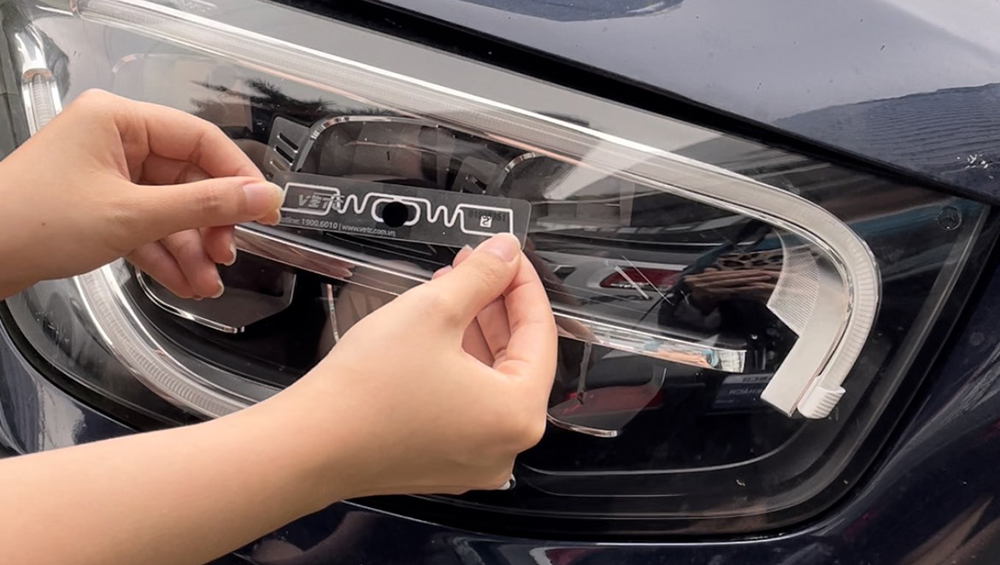
Diverse and Flexible Applications
Beyond road tolls, RFID technology can be applied to various other services such as parking lots, vehicle management, access control in workplaces, and more. With the same ETC card and a single identification account, users can pay for different vehicle-related services. Companies can also utilize this technology to automatically grant vehicle access based on predefined conditions.
In reality, compared to DSRC technology, RFID solutions have lower security. However, to mitigate fraud, several countries have explored integrating RFID into license plates for Electronic Vehicle Identification (EVI). This helps reduce personnel costs and ensures the accuracy of data information.
Suitable for the Four Phases of Non-Stop Toll Collection in Vietnam
According to the Ministry of Transport, non-stop toll collection in Vietnam will consist of four phases, and it is currently only in the first phase. By the fourth phase, expected from 2026 onwards, roads will no longer have toll booths or toll islands, but only maintain gantries with reading devices mounted on them. Vehicles passing through these points will maintain their speed and be automatically charged for road usage.
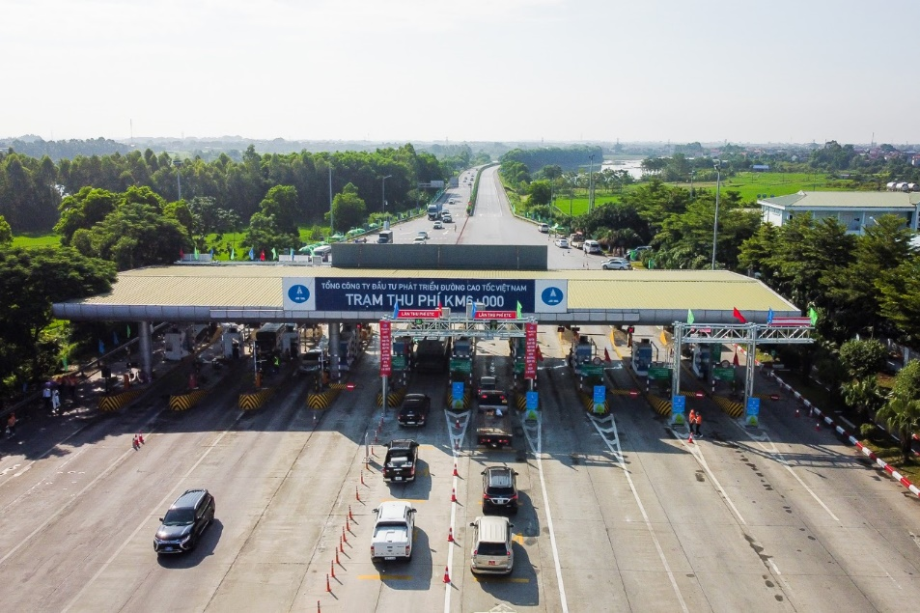
Vietnam – Initial Successes in Implementing Non-Stop Toll Collection with RFID
According to representatives from Vietnam Digital Traffic Joint Stock Company (VDTC), after implementing the automatic toll collection system, the number of personnel operating at toll stations managed by VDTC has decreased by 50%, from around 30 people to only 15 people per station. At the stations deployed and managed by VDTC, the vehicle pass-through success rate (terminal tag recognition rate) reached 98.3%, exceeding the target of 98% set out in Decision No. 583/QD-TCDBVN. In addition, according to VDTC, up to 90% of transactions are automatically audited, helping to reduce time, personnel, and operating costs.
Comparing RFID Solutions with DSRC Toll Collection Technology
To provide readers with a more comprehensive view of the two most popular automatic toll collection technologies in the world, we have compiled the following comparison table:
| Feature | DSRC (Dedicated Short-Range Communication) | RFID (Radio Frequency Identification) |
|---|---|---|
| Operating Frequency | 5.8 GHz | 918 – 923 MHz |
| Vehicle Recognition Rate | Good | Good |
| Terminal Device | Uses On-Board Unit (OBU) installed in the vehicle | Uses RFID tag attached to the windshield or headlight |
| Power Supply for Terminal Device | Requires power supply/or uses battery | No power supply required (Passive RFID tag) |
| Terminal Device Cost | High (30-40 USD) | Low (1-2 USD) |
| ETC Service Scalability | Low (High terminal device cost) | High (Low terminal device cost) |
As you can see, each technology has distinct characteristics and is suitable for different conditions of use. Whether to use RFID or DSRC depends on the needs and conditions of each country. In Vietnam, according to the assessment of leading experts, RFID technology remains the most optimal solution for non-stop road toll collection.
IT Nam Viet – Your Trusted RFID Solution Provider in Vietnam
Looking for a reliable RFID solution for your business? IT Nam Viet is the ideal choice for you. With over 10 years of experience, we are committed to providing customers with comprehensive, high-quality RFID solutions at the best prices in the market.
IT Nam Viet offers a wide range of RFID products, including:
- Various types of RFID tags
- RFID readers (handheld and desktop models)
- RFID printers
- Barcode scanners
- Barcode printers
We cater to all user requirements. All products at IT Nam Viet are guaranteed to be 100% genuine, utilizing advanced technology to ensure optimal operational efficiency. Our dedicated team is ready to provide comprehensive consulting, deployment, and maintenance services.
This concludes our information on automatic toll collection solutions using RFID technology. If you need advice or support on RFID or barcode technology, don’t hesitate to contact us via our Hotline: (+84) 962.888.179!
My name is Le Nam Viet, currently FOUNDER & CEO of Nam Viet IT Company, I graduated from Ho Chi Minh Polytechnic University. I have more than 3 years of experience providing RFID chip technology solutions, RFID scanners, barcode labels and barcode readers. It’s a pleasure to share my knowledge with readers.



 Tiếng Việt
Tiếng Việt


